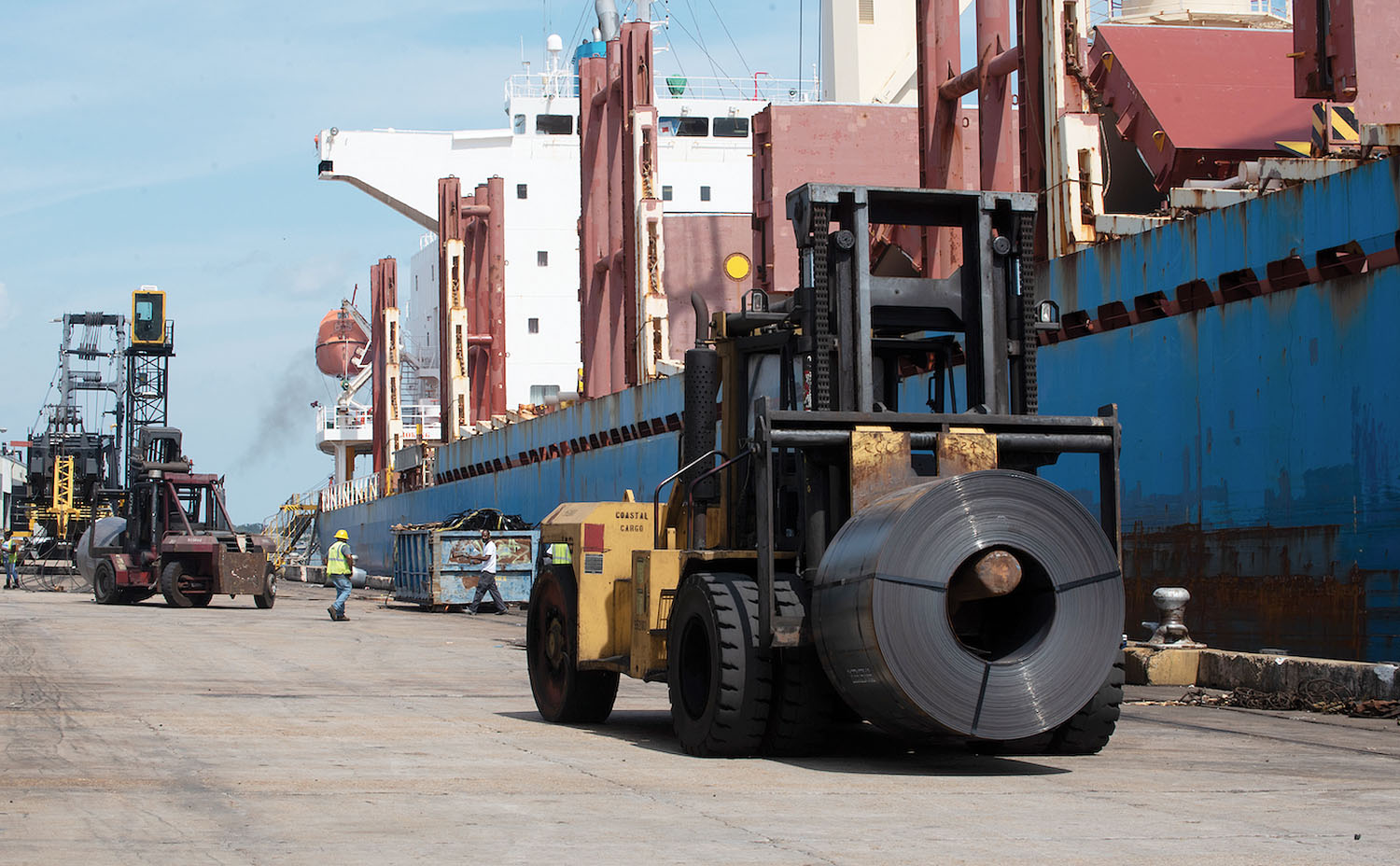The Port of New Orleans (Port NOLA) is celebrating a strong end to 2021, with growth and success across its cargo, rail, industrial real estate and cruise business lines. Breakbulk and bulk volumes grew 46 percent in 2021 compared to the year prior. The port handled 2.4 million short tons in 2021, up from 1.7 million short tons in 2020.
With the global container shortage and congestion at major container ports, many of the shippers doing business at Port NOLA turned to breakbulk shipping solutions, the port said. Leading breakbulk cargoes at the port included steel, natural rubber, project cargo and plywood, along with cargoes moved by super sacks like sand, tapioca flour and coffee. The port saw its biggest breakbulk and bulk cargo growth in steel, plywood and super sacks.
The port’s four new 100-foot-gauge container gantry cranes also arrived from China in December. Port officials expect to put those into service this spring, adding to the more than $100 million in recent investments at the Napoleon Avenue Container Terminal.
“Ending the year with such strong breakbulk volumes highlights Port NOLA’s diverse logistics solutions as we continue to position ourselves as an alternative gateway during supply chain disruptions,” said Brandy Christian, president and CEO of Port NOLA and CEO of the New Orleans Public Belt Railroad (NOPB). “As carriers and shippers continue to look to Port NOLA as the gulf gateway of choice, we are committed to investing in our state’s existing maritime assets, while also making progress on a second container facility that will serve vessels of all sizes and create more jobs and opportunity for Louisiana.”
The port has proceeded with real estate acquisitions associated with a planned container terminal in Violet, La., in St. Bernard Parish. The new terminal, located below the lowermost bridge on the Mississippi River and thus free of air draft issues, will be called the Louisiana International Terminal (LIT). Early this month, the port closed on about 1,100 acres of land for the proposed terminal. When complete, the terminal will cover 400 acres, with additional logistics-related property available nearby. According to the port, when the terminal opens, it will support more than 600 jobs in St. Bernard Parish and 2,500 throughout the state, along with $1.3 million in taxes generated locally and $5.5 million statewide.
Last year was also headlined by the groundbreaking for a $42 million expansion at Lineage Logistics cold storage facility in eastern New Orleans on the Inner Harbor Navigation Canal. That project will increase square footage at the facility from 160,000 to 304,000, with a targeted opening date of May 2022. The expansion will support the state’s $1.6 billion per year poultry industry, which includes 300 commercial broiler producers in 11 parishes.
For NOPB, 2021 was a record year for railcar storage volumes, with an average of 914 cars in storage for the year and rail volumes in excess of 26,000 cars, which was a 16 percent increase over 2020.
Last year, the port also celebrated the return of cruising, in spite of ongoing impacts from the COVID-19 pandemic. River cruises returned to New Orleans in March 2021, and blue water cruising returned in September 2021. The port is anticipating 285 sailings this year, with cruise passengers again approaching 1 million.
Port NOLA is continuing green initiatives like the Clean TRIP program, which helps truck drivers upgrade their trucks and reduce emissions. That program replaced 18 trucks in 2021. AAPA also honored Port NOLA with its Lighthouse Award of Excellence for Environmental Improvement and Stakeholder Involved for its Port Inner Harbor Economic Revitalization Plan (PIER Plan).
“Looking ahead, we know that our state’s future economic stability depends on our ability to meet current and future shipping and logistics needs,” Christian said. “As we celebrate our proud maritime legacy during our 125th anniversary, we are also looking ahead to the next 125 years—as we work to provide the next generation of infrastructure.”



